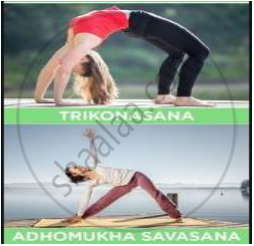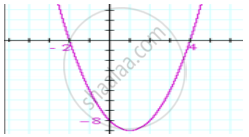Advertisements
Advertisements
Question
Divide. Write the quotient and the remainder.
(21x4 − 14x2 + 7x) ÷ 7x3
Solution
(21x4 − 14x2 + 7x) ÷ 7x3
= \[\frac{21 x^4 - 14 x^2 + 7x}{7 x^3}\]
= \[\frac{7 x^3 \times 3x - 14 x^2 + 7x}{7 x^3}\]
= \[\frac{7 x^3 \times 3x}{7 x^3} + \frac{- 14 x^2 + 7x}{7 x^3}\]
= \[3x + \frac{- 14 x^2 + 7x}{7 x^3}\]
So, quotient = 3x and remainder = -14x2 + 7x
RELATED QUESTIONS
Classify the following polynomials as linear, quadratic, cubic and biquadratic polynomials:
`x+x^2 +4`
Define the zero of a polynomial.
If x = 1 is a zero of the polynomial f(x) = x3 − 2x2 + 4x + k, write the value of k.
If a quadratic polynomial f(x) is factorizable into linear distinct factors, then what is the total number of real and distinct zeros of f(x)?
If a quadratic polynomial f(x) is a square of a linear polynomial, then its two zeros are coincident. (True/False).
State whether the given algebraic expression is polynomial? Justify.
10
The below picture are few natural examples of parabolic shape which is represented by a quadratic polynomial. A parabolic arch is an arch in the shape of a parabola. In structures, their curve represents an efficient method of load, and so can be found in bridges and in architecture in a variety of forms.




In the standard form of a quadratic polynomial, ax2 + bx + c, a, b and c are:
An asana is a body posture, originally and still a general term for a sitting meditation pose, and later extended in hatha yoga and modern yoga as exercise, to any type of pose or position, adding reclining, standing, inverted, twisting, and balancing poses. In the figure, one can observe that poses can be related to representation of quadratic polynomial.


The two zeroes in the below shown graph are:

For the polynomial `((x^3 + 2x + 1))/5 - 7/2 x^2 - x^6`, write the degree of the polynomial
Classify the following as a constant, linear, quadratic and cubic polynomials:
3x3
